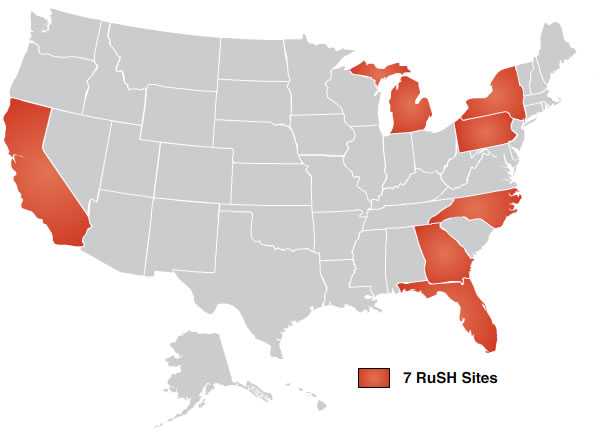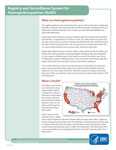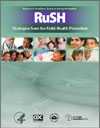Registry and Surveillance System for Hemoglobinopathies (RuSH)

From 2010 to 2012, in partnership with the National Institutes of Health’s National Heart, Lung, and Blood Institute, the Registry and Surveillance System for Hemoglobinopathies (RuSH) project collected state-specific information on people with sickle cell disease (SCD) and thalassemia. The RuSH project activities in the seven participating states (California, Florida, Georgia, Michigan, New York, North Carolina, and Pennsylvania) ended in the fall of 2012. The RuSH states and CDC analyzed the data collected and launched health prevention and promotion activities by:
- Creating fact sheets describing project results
- Developing papers to describe the project, including how it was done and what information was collected
- Developing papers that describe what was learned about the health of youth and adults with SCD and thalassemia in the 7 states
Registry and Surveillance System for Hemoglobinopathies (RuSH) Sites


RuSH Overview
The Registry and Surveillance System for Hemoglobinopathies (RuSH) is designed to collect information to learn about the number of people living with SCD and thalassemia so that we can better understand how these disorders affect their health.
RuSH Medscape Video
Learn about the Registry and Surveillance System for Hemoglobinopathies (RuSH) initiative.

RuSH Strategies from the Field: Health Promotion [PDF – 5.01mb]
RuSH Strategies from the Field: Data Collection [PDF – 4 mb]
The RuSH Strategies from the Field reports were created to showcase some of the unique ways in which the seven states implemented activities designed to meet programmatic goals of RuSH. The Health Promotion report highlights one of each state’s many programs featuring information about resources needed to operate or replicate the activity, intended benefits and outcomes, and lessons learned. The Data Collection report highlights a particular aspect of each state’s data collection process, including information about resources, lessons learned and sustainability. To learn more about the RuSH project access the Medscape video, featuring Dr. Althea Grant.
- Page last reviewed: August 9, 2017
- Page last updated: October 27, 2016
- Content source:



 ShareCompartir
ShareCompartir